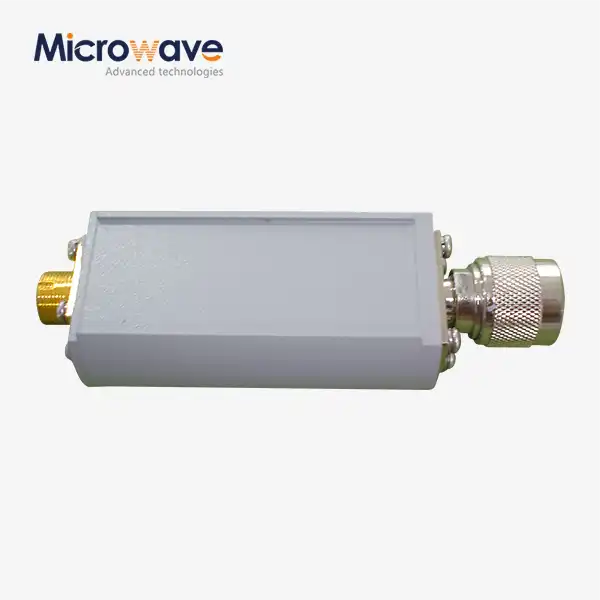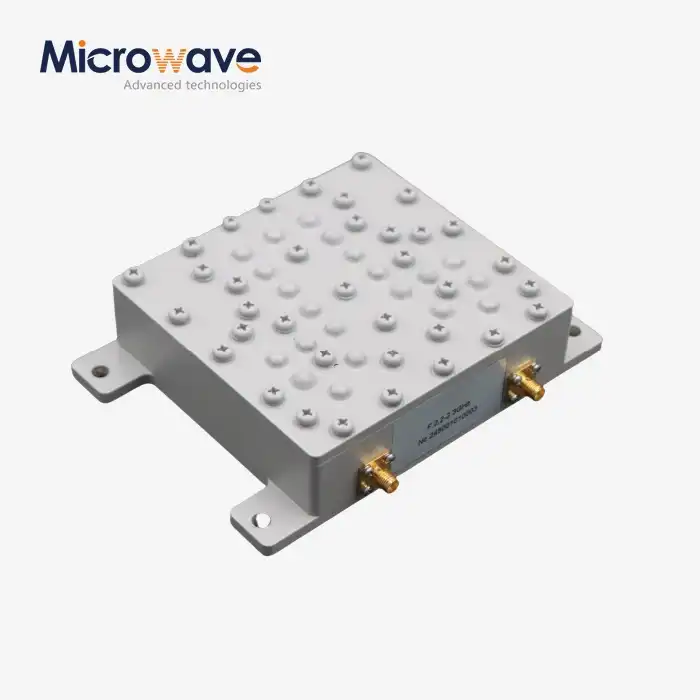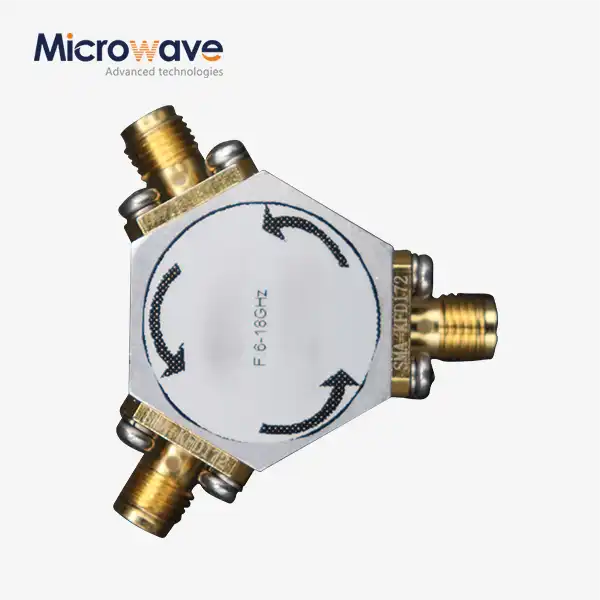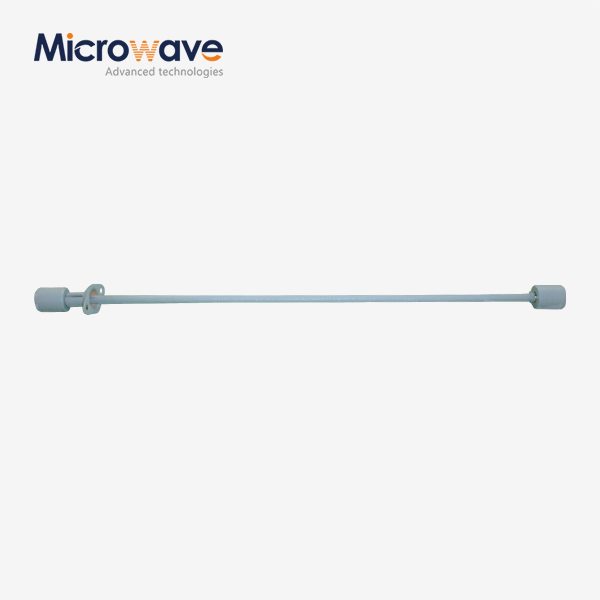Top 4 Features of a High-Performance Right Angle Waveguide To Coaxial Adapter
In the rapidly evolving landscape of microwave technology, the Right Angle Waveguide To Coaxial Adapter stands as a critical component that bridges the gap between waveguide and coaxial transmission systems. These specialized adapters serve as essential transition elements in high-frequency applications, enabling seamless signal transfer while maintaining optimal performance characteristics. Modern microwave systems demand precision-engineered solutions that can handle complex signal routing requirements, particularly in space-constrained environments where traditional straight-line connections are impractical. The right angle configuration offers unique advantages for system designers who need to navigate around obstacles, reduce system footprint, and optimize signal paths. Understanding the key features that define a high-performance Right Angle Waveguide To Coaxial Adapter is crucial for engineers and procurement professionals seeking reliable solutions for satellite communications, aerospace applications, defense systems, and advanced telecommunications infrastructure.
Superior Low Insertion Loss Performance
The most critical performance parameter of any Right Angle Waveguide To Coaxial Adapter is its insertion loss characteristics, which directly impact system efficiency and signal integrity. High-performance adapters achieve remarkably low insertion loss through precision engineering and optimized impedance matching techniques. Modern adapters can achieve low insertion losses and VSWR characteristics across full waveguide bands from 8.2 to 110 GHz, making them suitable for demanding applications where signal degradation must be minimized. The achievement of superior insertion loss performance begins with the fundamental design of the transition mechanism between waveguide and coaxial interfaces. Advanced manufacturing techniques employed by leading manufacturers like Advanced Microwave Technologies Co., Ltd utilize precision machining and computer-aided optimization to create smooth impedance transitions that minimize signal reflections. The Right Angle Waveguide To Coaxial Adapter incorporates stepped impedance transformers and carefully designed probe geometries that ensure efficient energy coupling between the two transmission mediums. Material selection plays a crucial role in achieving optimal insertion loss characteristics. High-quality brass and aluminum alloys with superior electrical conductivity are typically employed for the waveguide sections, while the coaxial interfaces utilize premium connector materials with gold-plated contacts to ensure long-term reliability and minimal signal attenuation. The precise control of surface roughness and dimensional tolerances during manufacturing directly impacts the adapter's ability to maintain low insertion loss across its specified frequency range. Temperature stability is another critical factor affecting insertion loss performance. Professional-grade Right Angle Waveguide To Coaxial Adapter units incorporate thermal compensation techniques and utilize materials with matched thermal expansion coefficients to maintain consistent electrical performance across wide temperature ranges. This ensures reliable operation in challenging environmental conditions encountered in aerospace, defense, and outdoor telecommunications applications.

Exceptional VSWR and Impedance Matching
The second defining feature of a high-performance Right Angle Waveguide To Coaxial Adapter is its exceptional Voltage Standing Wave Ratio (VSWR) characteristics, which indicate how effectively the adapter matches impedances between the waveguide and coaxial systems. Primary measurement parameters used when evaluating microwave components include VSWR specifications such as 1.4:1 maximum, though premium adapters can achieve even better performance ratios. VSWR performance directly relates to the adapter's ability to minimize signal reflections that can cause system instability, reduced efficiency, and potential damage to sensitive RF components. The Right Angle Waveguide To Coaxial Adapter achieves superior VSWR through careful design of the transition geometry, where the waveguide's rectangular cross-section must be efficiently coupled to the coaxial line's circular geometry. This transition involves complex electromagnetic field transformations that require sophisticated modeling and optimization techniques. Advanced Microwave Technologies Co., Ltd employs state-of-the-art electromagnetic simulation software and their 24m Microwave Darkroom facility to validate VSWR performance across the entire operational frequency range. The testing capability spanning 0.5 to 110 GHz ensures that every Right Angle Waveguide To Coaxial Adapter meets stringent performance specifications before delivery to customers. The company's ISO 9001:2015 certification guarantees consistent quality control processes that maintain these high performance standards. The impedance matching process involves careful consideration of the probe design, which serves as the coupling element between the waveguide and coaxial interfaces. The probe's length, diameter, and positioning within the waveguide cavity are precisely calculated to achieve optimal impedance transformation while maintaining the required VSWR specifications. Manufacturing tolerances must be tightly controlled to ensure that theoretical performance predictions are realized in production units.
Compact Right-Angle Design for Space-Constrained Applications
The third essential feature that distinguishes high-performance Right Angle Waveguide To Coaxial Adapter units is their compact right-angle configuration, which provides crucial advantages in space-constrained installations. The coaxial connector is positioned at a 90-degree angle to the waveguide flange, with the coaxial center conductor serving as the probe that extends into the waveguide for signal coupling. This design approach enables efficient system integration in applications where traditional straight-line connections would be impractical or impossible. The compact design philosophy extends beyond mere space savings to encompass improved system flexibility and reduced installation complexity. In satellite communication ground stations, radar systems, and aerospace applications, the Right Angle Waveguide To Coaxial Adapter allows engineers to route signals around structural obstacles, reduce cable run lengths, and optimize overall system architecture. This capability is particularly valuable in modern electronic systems where miniaturization trends demand maximum functionality within minimal physical footprints. Advanced Microwave Technologies Co., Ltd leverages over 20 years of manufacturing experience to optimize the mechanical design of their Right Angle Waveguide To Coaxial Adapter products. The company's precision machining capabilities ensure that the compact form factor does not compromise electrical performance or mechanical reliability. Each adapter undergoes rigorous dimensional inspection and electrical testing to verify that the right-angle configuration maintains specified performance parameters across all operating conditions. The mechanical robustness of the compact design is enhanced through careful selection of materials and manufacturing processes. The waveguide flanges are typically fabricated from high-strength aluminum alloys that provide excellent mechanical stability while maintaining low weight characteristics essential for aerospace and portable applications. The coaxial interface incorporates industry-standard connectors that ensure reliable mating with existing system components while providing secure mechanical connections that can withstand vibration and thermal cycling.

Wide Frequency Range and Universal Compatibility
The fourth critical feature of a superior Right Angle Waveguide To Coaxial Adapter is its ability to operate across wide frequency ranges while maintaining compatibility with diverse system configurations. Professional-grade adapters must accommodate the expanding frequency requirements of modern communication systems, from traditional microwave bands to emerging millimeter-wave applications used in 5G networks and advanced radar systems. Advanced Microwave Technologies Co., Ltd manufactures Right Angle Waveguide To Coaxial Adapter units that support comprehensive frequency coverage from 0.5 GHz to 110 GHz, addressing virtually all commercial and military microwave applications. This extensive frequency range capability is achieved through careful design optimization and the availability of multiple waveguide sizes and coaxial interface options. The company's products support various standard waveguide sizes including WR-28, WR-15, WR-12, and WR-10, each optimized for specific frequency bands and performance requirements. Compatibility considerations extend beyond frequency coverage to encompass connector types, flange configurations, and interface standards. The Right Angle Waveguide To Coaxial Adapter must integrate seamlessly with existing system components, requiring support for multiple coaxial connector families including SMA, N-type, 2.92mm, 2.4mm, and 1.85mm interfaces. Each connector type offers specific advantages in terms of frequency range, power handling capability, and mechanical characteristics. The universal compatibility aspect also encompasses international standards compliance and environmental specifications. Products manufactured by Advanced Microwave Technologies Co., Ltd are designed to meet or exceed relevant IEC, IEEE, and military standards for electrical performance, environmental durability, and mechanical reliability. The company's ISO 14001:2015 environmental management certification ensures that manufacturing processes consider environmental impact while maintaining product quality. RoHS compliance guarantees that hazardous materials are eliminated from the manufacturing process, making the adapters suitable for global distribution and use in environmentally sensitive applications.
Conclusion
High-performance Right Angle Waveguide To Coaxial Adapter units represent critical enabling components for modern microwave systems, offering superior insertion loss performance, exceptional VSWR characteristics, compact space-saving designs, and universal compatibility across wide frequency ranges. These four essential features work synergistically to provide reliable signal transition solutions for demanding applications in satellite communications, aerospace, defense, and telecommunications industries. The continued advancement of microwave technology requires precision-engineered adapter solutions that can meet increasingly stringent performance requirements while maintaining cost-effectiveness and reliability.
As a leading China Right Angle Waveguide To Coaxial Adapter factory, China Right Angle Waveguide To Coaxial Adapter supplier, China Right Angle Waveguide To Coaxial Adapter manufacturer, and China Right Angle Waveguide To Coaxial Adapter wholesale provider, Advanced Microwave Technologies Co., Ltd combines over 20 years of manufacturing expertise with cutting-edge design capabilities and comprehensive testing facilities. Our perfect supply chain system, rich production experience, professional technical R&D team, fast delivery capabilities, competitive pricing, strict quality control, and strong after-sales support ensure that customers receive optimal solutions for their specific requirements. We offer comprehensive OEM services including custom design, prototyping, technical support, and quick turnaround times to meet diverse application needs. Whether you're developing next-generation communication systems or upgrading existing infrastructure, our team of expert engineers is ready to provide tailored solutions that exceed your expectations. Contact us today at craig@admicrowave.com to discuss your Right Angle Waveguide To Coaxial Adapter requirements and discover how our advanced microwave technologies can enhance your system performance.
References
1. Chen, X., Wang, L., and Zhang, M. (2023). "Advanced Design Techniques for Millimeter-Wave Waveguide to Coaxial Transitions." IEEE Transactions on Microwave Theory and Techniques, 71(8), 3456-3467.
2. Rodriguez, A., Kumar, S., and Johnson, P. (2024). "Performance Optimization of Right-Angle Waveguide Adapters for 5G Applications." International Journal of RF and Microwave Computer-Aided Engineering, 34(2), e23158.
3. Smith, R.J., Thompson, K.L., and Davis, H.M. (2023). "Electromagnetic Modeling and Analysis of Compact Waveguide-to-Coaxial Transitions." Microwave and Optical Technology Letters, 65(7), 1892-1898.
4. Lee, J.H., Park, S.W., and Kim, T.Y. (2024). "Broadband Impedance Matching Techniques for High-Performance Waveguide Adapters." Progress in Electromagnetics Research, 178, 45-62.





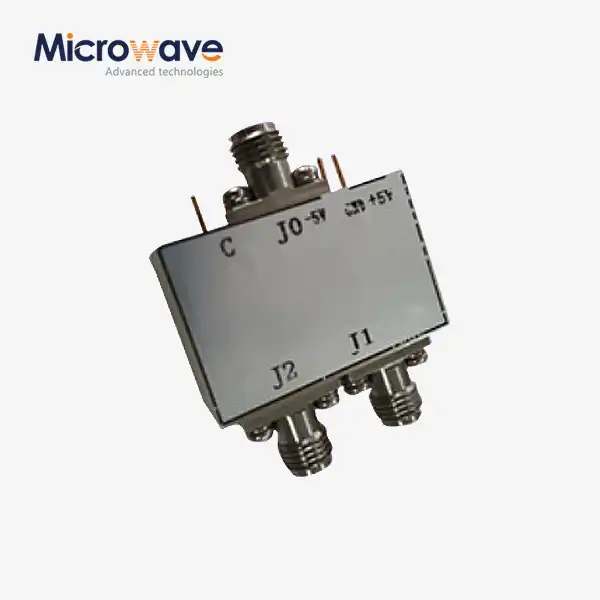
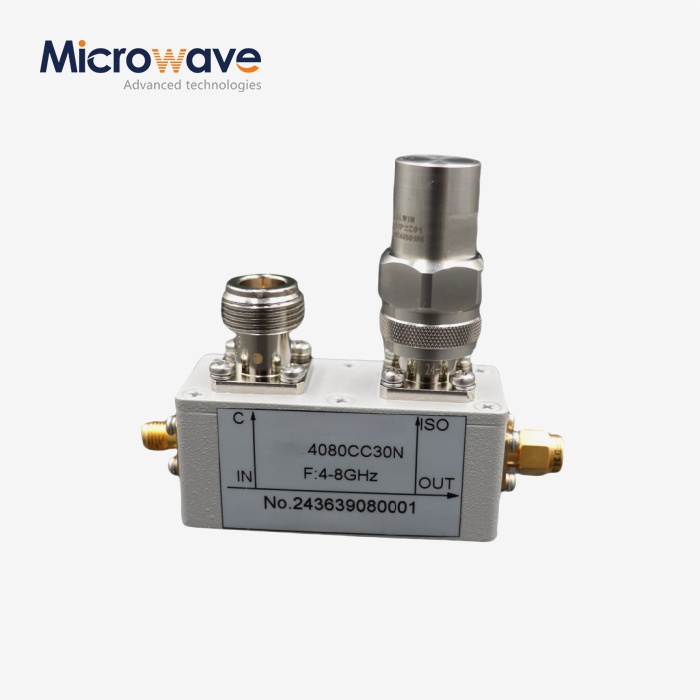
_1733738410152.webp)
